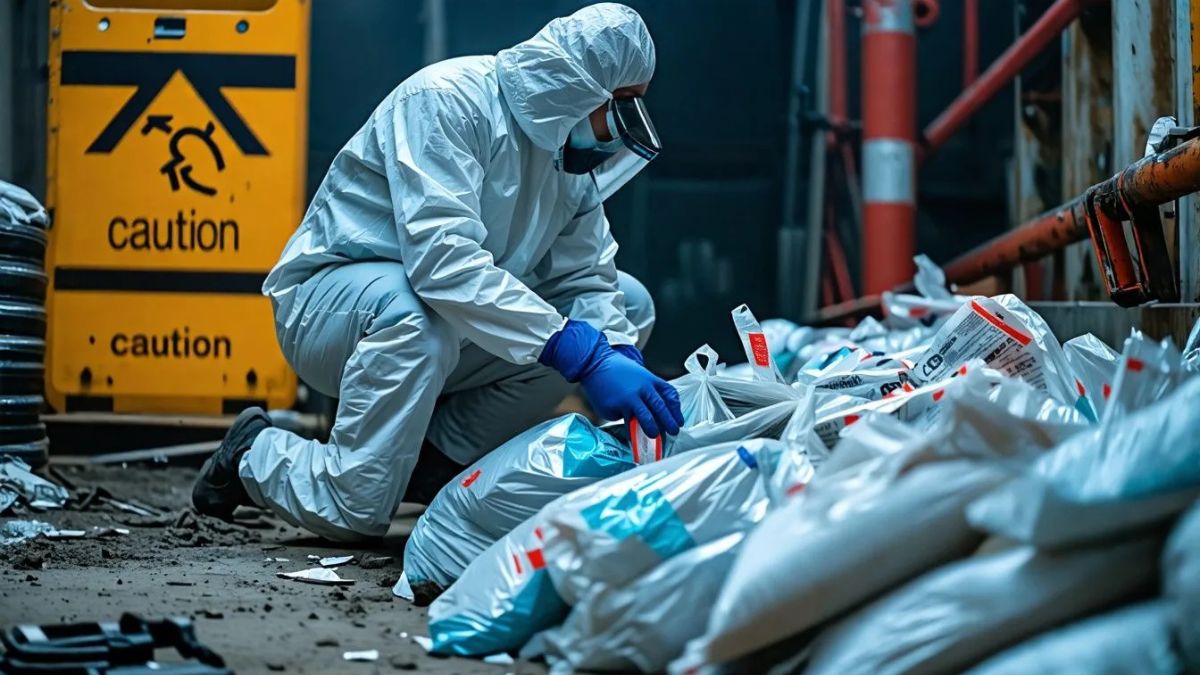When we hear the word “asbestos,” we often think of insulation, fireproofing, and the serious health risks associated with long-term exposure. However, in many industrial settings, a lesser-known but equally concerning hazard is emerging: Asbestlint.
This fine, airborne residue is becoming an important topic in environmental safety, particularly within industries where legacy asbestos materials are still in place or have been disturbed. In this article, we’ll explore what Asbestlint is, how it forms, why it’s dangerous, and—most importantly—what can be done to manage it responsibly.
What Is Asbestlint?
Asbestlint refers to fine particles or fibers of asbestos that accumulate as a dust-like material, typically in environments where asbestos-containing materials (ACMs) are aging, deteriorating, or have been disturbed by mechanical processes such as drilling, grinding, or HVAC activity.
While traditional asbestos fibers are already hazardous, Asbestlint is particularly dangerous because:
- It’s extremely fine and airborne, making it more easily inhaled.
- It can accumulate over time in ventilation systems, machinery, or on surfaces.
- It’s often overlooked during routine inspections or cleaning protocols.
The term “Asbestlint” is gaining traction in occupational health circles, where there’s growing awareness of the micro-level threats present in seemingly “clean” industrial facilities.
How Does Asbestlint Form?
There are several pathways by which Asbestlint can develop in industrial environments:
1. Mechanical Disturbance of ACMs
Activities such as maintenance work, pipe insulation removal, or demolition can release tiny asbestos fibers into the air. Over time, these settle as lint-like material.
2. Air Duct Contamination
In facilities with outdated air systems, asbestos fibers can be drawn into HVAC systems, where they collect on vents, filters, or recirculate throughout the building.
3. Machinery and Equipment Exposure
Older machines insulated with asbestos may shed microscopic particles during regular operation, forming a layer of Asbestlint in enclosed or high-friction areas.
Why Asbestlint Is a Serious Health Hazard
Most people are aware that asbestos exposure is linked to severe health risks, including:
- Mesothelioma
- Asbestosis
- Lung cancer
- Chronic respiratory issues
Asbestlint increases these risks because it is:
- Easily inhaled due to its fine nature
- Harder to detect with the naked eye or casual inspection
- Persistent, especially if ventilation systems redistribute it
Even brief or low-level exposures, when repeated, can be harmful. Workers may unknowingly carry fibers home on their clothing, potentially exposing family members.
Where Is Asbestlint Most Commonly Found?
While any building with historical asbestos use may harbor Asbestlint, certain environments are particularly at risk:
| Environment | Risk Level | Notes |
| Power plants | High | Often used asbestos insulation in pipes and turbines |
| Shipyards | High | Asbestos used extensively in hulls and engine rooms |
| Manufacturing facilities | Medium–High | Particularly older factories or those handling heat-intensive processes |
| Schools and government buildings | Medium | Legacy materials in old construction |
| Warehouses | Medium | Especially if they house aging equipment or insulation |
Detection and Monitoring: How to Identify Asbestlint
Because Asbestlint is so fine, visual inspection is rarely sufficient. Here are the most reliable methods:
1. Air Sampling
Professionals use Phase Contrast Microscopy (PCM) or Transmission Electron Microscopy (TEM) to detect fiber concentrations in the air.
2. Surface Sampling
Wipe tests and tape-lift methods are useful for identifying Asbestlint on surfaces, especially in low-traffic or hard-to-clean areas.
3. HVAC System Inspections
Duct cleaning professionals can identify and collect samples from internal ductwork, filters, and blower compartments where lint may build up.
Pro Tip: Any asbestos-related sampling should only be done by certified professionals following local regulations.
Legal and Regulatory Framework
OSHA Standards
The U.S. Occupational Safety and Health Administration (OSHA) has strict standards on permissible exposure limits (PELs) for asbestos, including airborne fibers like Asbestlint.
EPA Guidelines
The Environmental Protection Agency (EPA) regulates asbestos handling, abatement, and disposal under the Clean Air Act and TSCA (Toxic Substances Control Act).
International Standards
Countries like the UK, Australia, and Canada have their own regulatory bodies and may require stricter compliance for airborne fiber risks in industrial settings.
Managing and Preventing Asbestlint Exposure
Reducing Asbestlint in your workplace isn’t just about compliance — it’s about creating a safer environment for everyone. Here’s how:
1. Conduct a Risk Assessment
Start with a full asbestos survey, especially if your facility was built before the 1980s. Identify all ACMs and evaluate their condition.
2. Implement an Asbestos Management Plan
This should include:
- Location and condition of all ACMs
- Maintenance schedules
- Emergency response protocols
- Notification procedures for workers and visitors
3. Upgrade Ventilation Systems
Old HVAC systems can spread Asbestlint throughout your facility. Ensure proper:
- Filter replacement
- Duct cleaning
- Isolation of contaminated zones
4. Use Proper PPE
Workers exposed to high-risk areas should wear:
- P100 respirators
- Disposable coveralls
- Gloves and safety goggles
5. Train Your Workforce
Educate employees about:
- What Asbestlint is
- How it spreads
- What symptoms of exposure to look out for
- Who to report concerns to
6. Regular Cleaning Protocols
Use HEPA-filtered vacuums and wet cleaning methods. Avoid sweeping or compressed air, which can stir up fibers.
Case Study: Asbestlint in a Manufacturing Plant
A mid-sized auto parts manufacturer discovered elevated asbestos fiber levels near an old boiler room during a routine air test. While no active ACMs were exposed, further inspection revealed Asbestlint buildup inside the air ducts and around outdated machinery insulation.
After hiring an asbestos remediation team, the company:
- Cleaned all ducts and replaced HVAC filters
- Sealed off and encapsulated known ACMs
- Instituted quarterly air testing
- Conducted employee safety training
Since the intervention, no new airborne fiber incidents have been reported.
Final Thoughts
In the broader conversation around occupational health and asbestos, Asbestlint deserves special attention. Its invisibility and persistence make it a silent hazard, but with awareness, proper monitoring, and proactive safety measures, it can be effectively managed.
Whether you’re a facility manager, safety officer, or worker in an industrial setting, understanding and addressing Asbestlint can help protect lives — and ensure regulatory compliance for years to come.
FAQs About Asbestlint
Q1: Is Asbestlint different from regular asbestos?
Yes. While both originate from the same material, Asbestlint refers to the fine, dust-like accumulation of asbestos fibers, making it easier to inhale and harder to detect.
Q2: How do I know if my building has Asbestlint?
Only certified professionals can test and confirm the presence of asbestos or Asbestlint through air and surface sampling.
Q3: Is it expensive to manage Asbestlint?
Costs vary depending on the size of the facility and level of contamination, but ignoring the issue could lead to higher legal and health costs later.
Q4: Can Asbestlint exposure affect visitors or office staff?
Yes. If not properly managed, airborne fibers can travel beyond industrial zones, putting anyone in the building at risk.




